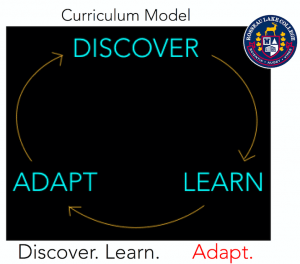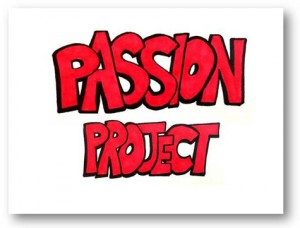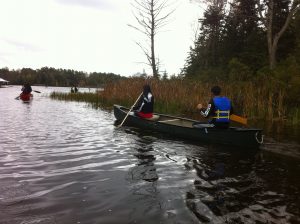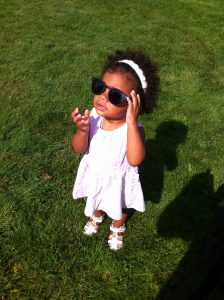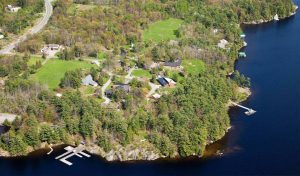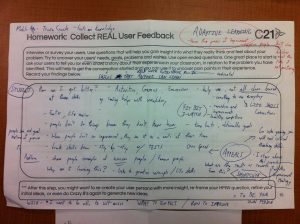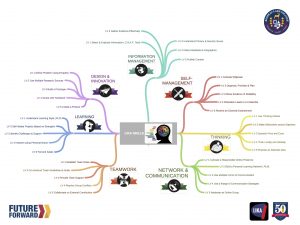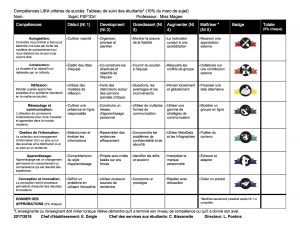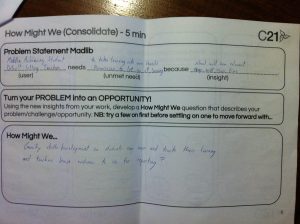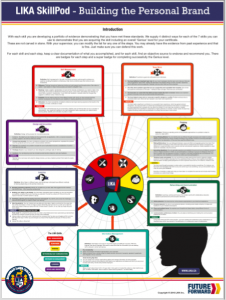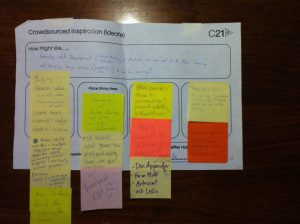Rosseau Lake College’s inquiry-based and experiential learning initiative, DISCOVERY DAYS, like all truly great things, rests on the shoulders of giants. I was inspired by the following schools and articles and perhaps you might be too.
DESIGN TIME RESEARCH (Inquiry-Based Learning)
JOURNAL/ BLOG |
LINK |
SUMMARY QUOTES |
| Professionally Speaking | Self-Directed Learning | In other words, explains principal Patricia Coburn, OCT, students set their own learning goals, follow a personalized program and work and learn in an environment that enables them to actively pursue self-directed learning. |
| Flow Blog | Self-Directed Learning & Exam Scores | Students’ success on the IB DP exams became the measure against which SDL time was evaluated. In that very first year of SDL time students’ DP exam averages exceeded the results of all previous years. |
| Getting Smart | Integrated Curriculum | Repko (2009) and others have asserted that interdisciplinary instruction fosters advances in cognitive ability and gains in the ability to recognize bias, think critically, tolerate ambiguity, acknowledge and appreciate ethical concerns. |
| Carleton College | Interdisciplinary Learning | Engaging students and helping them to develop knowledge, insights, problem solving skills, self-confidence, self-efficacy, and a passion for learning are common goals that educators bring to the classroom, and interdisciplinary instruction and exploration promotes realization of these objectives. |
| Corwin Connect | PBL & Direct Instruction | My argument here is that if we utilize effective direct instruction in the PBL/PrBL classroom specifically in situations where students are building knowledge and skill then we may substantially mitigate the limiting effect of the method as it relates to learning. |
List of Schools Adopting Similar DESIGN TIME Initiatives:
Canadian Coalition of Self-Directed Learning
Mary Ward Catholic Secondary School in Toronto has been pioneering student-directed learning for the past 20 years.
SEED, in Toronto, is North America’s oldest public alternative school specializing in self-directed learning.
High Tech High (U.S.)*
The exemplar of Project-Based Learning in action, this innovative school in San Diego was featured in Tony Wagner’s book and subsequent documentary film, Most Likely to Succeed.
Lindsay Unified Public Schools (U.S)*
The district personalizes learning by giving students a performance-based model that lets students progress after they demonstrate mastery. School days are split between self-directed learning and teacher-led instruction. District teachers are called “learning facilitators,” and even during teacher-led instruction, students can choose from various assignments and learning experiences.
Taylor County School District (U.S.)*
District leaders realized that “one size fits all” doesn’t work when it comes to student learning. Now, teachers and students work together to create individualized learning plans based on students’ needs, interests and goals. The approach includes project-based learning, self-based learning, online learning, and peer-led instruction.
JFK Eagle Academy (U.S.)*
The school developed a program focused on Socratic seminars and leadership development, because teachers and school leaders believe students benefit from inquiry, critical thinking and problem-solving. Students work at their own pace toward college and career readiness.
LINC High School (U.S.)*
School administrators believe every student can be a leader, and student agency, leadership and character education is an important part of the school’s philosophy. Classes aren’t organized into traditional subjects, but instead are grouped into 30-day “learning modules” that integrate various subjects and let students explore local, national and international issues through research and critical thinking.
The Putney School (U.S.)
“Our semi-annual Project Weeks challenge students to dive deep into something they have learned in their academic coursework, make it personal, and mobilize it creatively. While we focus on research and process, the results are incredible… Project Weeks are all about mobilizing knowledge: connecting disciplines, digging through deeper ideas, and applying what one has learned.”
*https://www.eschoolnews.com/2017/02/16/personalized-learning-action/2/?all
FLEX TIME RESEARCH (Skills-Based Learning)
JOURNAL/ BLOG |
LINK |
SUMMARY QUOTES |
| 20Time.org | Passion Projects | 20Time projects allow students to track their learning growth, which supercharges intrinsic motivation. Way more effective than grades and other carrots and sticks. |
| Genius Hour Journal | Genius Hour | The search-engine giant, Google, allows its engineers to spend 20% of their time to work on any pet project that they want. The idea is very simple. Allow people to work on something that interests them, and productivity will go up. |
| 20 Time in Education Blog | 20% Time | Daniel Pink asks what drives us. Sir Ken Robinson asks us to inspire creativity in our students. The latest in education is asking us to teach our students to create their own questions, do their own research, and form their own conclusions with their learning. Why? The world is a collaborative, communicative place and it is the world of online tools that has made it this way. Our students’ workplaces will be places with teams at tables, not individuals in cubicles. They will be asked to be innovative and create the next tool, not to push bureaucratic paper. We must teach them how to think on their own without being told what to do. We need to teach them to be autonomous learners. Only one who can guide his own learning can effectively contribute to a team. |
| ASCD | The Genius of Design | Despite its exciting beginning, that first Genius Hour project more than 10 years ago actually failed on many levels. I provided too much structure in areas where students needed more freedom and agency. I didn’t provide enough scaffolding in areas where they lacked necessary skills. I failed to anticipate some of the social and emotional challenges of giving students the freedom to learn what they wanted to learn.
Still, even with all of these mistakes, something was different. My students were empowered to take their learning in their own direction. |
| Ontario Ministry of Education | 21st Century Competencies | Researchers acknowledge that the need to engage in problem-solving and critical and creative thinking has “always been at the core of learning and innovation” (Trilling & Fadel, 2009, p. 50). What’s new in the 21st century is the call for education systems to emphasize and develop these competencies in explicit and intentional ways through deliberate changes in curriculum design and pedagogical practice. The goal of these changes is to prepare students to solve messy, complex problems – including problems we don’t yet know about – associated with living in a competitive, globally connected, and technologically intensive world. |
| Brookings | Skills Movement Across Education | Around the world education systems are increasingly inclusive of a broad range of skills in curricula to prepare students for the complex challenges of this century. |
| World Economic Forum | Future Job Skills | Five years from now, over one-third of skills (35%) that are considered important in today’s workforce will have changed. |
| World Economic Forum | Jobs are Changing | What is clear is that interpersonal skills are unlikely to be rendered obsolete by technological innovation or economic disruptions. In a changing workforce, it’s having a strong foundation in these versatile, cross-functional skills that allows people to successfully pivot. |
| Quartz | What Skills do Kids Need to Thrive | New research from the Sutton Trust, a British foundation focused on social mobility, finds that 88% of young people, 94% of employers, and 97% of teachers say these so-called life skills are as or more important than academic qualifications. |
List of Schools Adopting Similar FLEX TIME Initiatives:
Rothesay Netherwood – New Brunswick (Genius Hour & Disrupted)
The only independent school in New Brunswick, Rothesay has adopted numerous innovations to give their students voice-and-choice over passions and interests. Most recently they have empathized with students by creating assessment blocks in which only specific subject areas are able to administer summative assessment one at a time. This aims to help students and teachers work smarter at not overwhelming and overstuffing the learning.
The York School – Toronto (Genius Hour)
A pioneer in technology integration, this Toronto independent school has paved the way for diverse Passion Projects across grade levels.
Holy Trinity School – Richmond Hill, Toronto (Flex Time)
This middle and senior school initiative gives students weekly choice over which activities or tutorials will best help them succeed.
Hillfield Strathallan College – Hamilton (Flex Time)
A wide-reaching whole-school initiative in which one hour per day is organized around student academic needs, well-being activities, and PBL guidance. Students choose where they should be and what they should learn.
ACTIVE TIME RESEARCH (Experiential Learning)
JOURNAL/ BLOG |
LINK |
SUMMARY QUOTES |
| Getting Smart | Social Emotional Learning Research | The statement that “Social, emotional, and cognitive competencies can be taught and developed throughout childhood, adolescence, and beyond,” certainly underscores Carol Dweck’s work around growth mindset. In short, we aren’t simply born with or without SEL traits; rather, they can be taught and shaped throughout our experiences. |
| Global Digital Citizen Foundation | 5 Ways Outdoor Education Can Prepare our Students for the Future | Outdoor Education can be widely defined, but generally is a form of experiential organised learning that occurs in an outdoor setting and typically involves “journey-based experiences in which students participate in a variety of adventurous, memorable challenges.” This style of learning has various benefits, from cultivating the relevant emotional intelligence needed for effective leadership, to develop the confidence and competence needed to persevere in stressful situations. |
List of Schools Adopting Similar ACTIVE TIME Initiatives:
Havergal College (Day 9 Initiative)
The mission for Day 9 is to align the school’s values and mission through curated, co-created experiences with faculty and students. Day 9s are opportunities to deepen and extend learning.
University and College Information
JOURNAL/ BLOG |
LINK |
SUMMARY QUOTES |
| Stanford Social Innovation Review | Education is Changing | There is therefore no doubt about where education is going, but there is a great deal of uncertainty concerning how to get there, and, importantly, how to measure progress along the way. |
| Harvard Graduate School (College Admissions) | Turning the Tide | … high school students often perceive colleges as simply valuing their achievements, not their responsibility for others and their communities. |
| TES | Independent School Pupils Feel More Prepared for University | One of the suggestions for students is reminding themselves what “independent learning” means to ensure they are prepared for an environment where there is less direct hands-on teaching support. |
| NAIS | Mastery Transcript Consortium | In other words, many students do not learn about the world in school; instead, they learn about a teacher’s preferences, a test’s likeliest questions, and their own ability or inability to master a system that doesn’t place their growth first. |
| Innovative Post-Secondary Institutions | Minerva Schools | Minerva focuses on developing your abilities to think critically and creatively, to communicate effectively, and to work well with others. These aspects of your education are far more important than simply memorizing facts and concepts because they provide a set of practical and adaptable skills, together with an understanding of how to apply them in the world. |
| Innovative Post-Secondary Institutions | Quest University Canada | Each student is required to take between one and four experiential blocks as part of his or her academic program. These blocks are designed to meet each student’s academic and career interests and can include varied experiences, |
LIST OF FURTHER RESOURCES
Alexander, C & McKean, M. (2017, October 22). The Problem of Youth Unemployment: Predicting the Changing Future of Work. Globe & Mail. Retrieved from https://beta.theglobeandmail.com/report-on-business/rob-commentary/the-problem-of-youth-unemployment-predicting-the-changing-future-of-work/article
Berger, R. (2017, October 25). The Importance of Academic Courage. Edutopia. Retrieved from https://www.edutopia.org/article/importance-academic-courage?utm_source=twitter&utm_medium=socialflow
Buck Institute for Education (2017). What is Project Based Learning (PBL)? Retrieved from https://www.bie.org/about/what_pbl
Engelbert, C. & Hagel, J. (2017, July 31) Radically open: Tom Friedman on jobs, learning, and the future of work. Deloitte Review (21) Retrieved from journal https://dupress.deloitte.com/dup-us-en/deloitte-review/issue-21/tom-friedman-interview-jobs-learning-future-of-work.html?id=dup-us-en:2sm:3tw:4dup_gl:5eng:6dup
Fullan, M. (2014, January). A Rich Seam: How New Pedagogies Find Deep Learning. Retrieved from http://www.michaelfullan.ca/wp-content/uploads/2014/01/3897.Rich_Seam_web.pdf
Furedi, F. (2016, June 26). Schools Need to Encourage Students out of their Comfort Zone so they can Adapt to University. TES. Retrieved from https://www.tes.com/news/school-news/breaking-views/schools-need-encourage-students-out-their-comfort-zone-so-they-can
Hoover, E. (2017, November 1) What Colleges Want in an Applicant (Everything). New York Times. Retrieved from https://www.nytimes.com/2017/11/01/education/edlife/what-college-admissions-wants.html
Ontario Ministry of Education. (2016, Fall). 21st Century Competencies: Foundation Document for Discussion. Retrieved from http://www.edugains.ca/resources21CL/About21stCentury/21CL_21stCenturyCompetencies.pdf
Prevette, S. (2017, May). Creating Future Designers: It Starts in the Classroom. Policy Magazine. Retrieved from http://policymagazine.ca/pdf/26/PolicyMagazineMayJune-2017-Prevette.pdf
Kaechele, M. (2017, February 2). Scaffolding the PBL Shift. [Web log post] Retrieved from http://www.bie.org/blog/scaffolding_the_pbl_shift
Lacavera, A. (2017, October 26). We Need to Stop Coddling our Kids if we want Canada to Become a Nation of Entrepreneurs. Globe & Mail. Retrieved from https://beta.theglobeandmail.com/report-on-business/small-business/sb-growth/we-need-to-stop-coddling-our-kids-if-we-want-canada-to-become-a-nation-of-entrepreneurs/article
Lichtman, G. (2014) #EdJourney: A Roadmap to the Future of Education. New Jersey: Jossey-Bass.
Repko, A. (2009). Assessing Interdisciplinary Learning Outcomes. Retrieved from https://oakland.edu/Assets/upload/docs/AIS/Assessing_Interdisiplinary_Learning_Outcomes_(Allen_F._Repko).pdf
Schafer, D. & Yamasaki, K. (2017). Designing Creative Collaboration School Spaces. Building Dialogue. Retrieved from https://crej.com/news/designing-creative-collaboration-school-spaces/
Schneider, J. (2017) What Makes a Great School. Usable Knowledge. [Web log post] Retrieved from https://www.gse.harvard.edu/news/uk/17/10/what-makes-great-school
Swartz, K. (2006, October 4) Why a School’s Master Schedule is a Powerful Enabler of Change. Mind Shift. Retrieved from https://ww2.kqed.org/mindshift/2016/10/24/why-a-schools-master-schedule-is-a-powerful-enabler-of-change/
Terada, Y. (2017, September 20). Why Students Forget – and What You Can Do About It. Edutopia. Retrieved from https://www.edutopia.org/article/why-students-forget-and-what-you-can-do-about-it?utm_source=twitter&utm_medium=socialflow
Tormala, A. (2016, October 24). Discomfort, Growth, and Innovation. Edutopia. Retrieved from https://www.edutopia.org/blog/discomfort-growth-and-innovation-alyssa-tormala
Trilling, B. & Fadel, C. (2009) 21st Century Skills: Learning for Life in Our Times. Jossey-Bass: New Jersey
Wagner, T. & Dintersmith, T. (2015, August 18). Most Likely to Succeed: Preparing Our Kids for the Innovation Era. Scribner. Retrieved from http://www.tonywagner.com/most-likely-to-succeed-preparing-our-kids-for-the-innovation-era/
Walls, J. (2017, November 2). York U Bringing Together New Maker Space in Markham. York University Media Relations. Retrieved from http://news.yorku.ca/2017/11/02/york-u-bringing-together-innovators-and-entrepreneurs-in-new-maker-space-in-markham/?
Wiggins, G. & Mctighe, J. (2011). Understanding by Design: Framework. ASCD. Retrieved from http://www.ascd.org/ASCD/pdf/siteASCD/publications/UbD_WhitePaper0312.pdf




